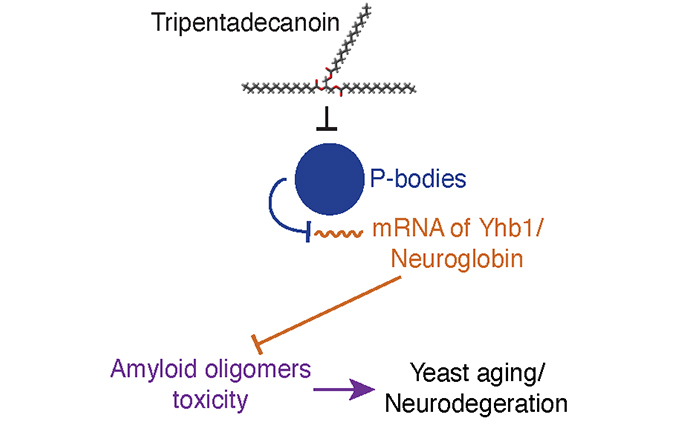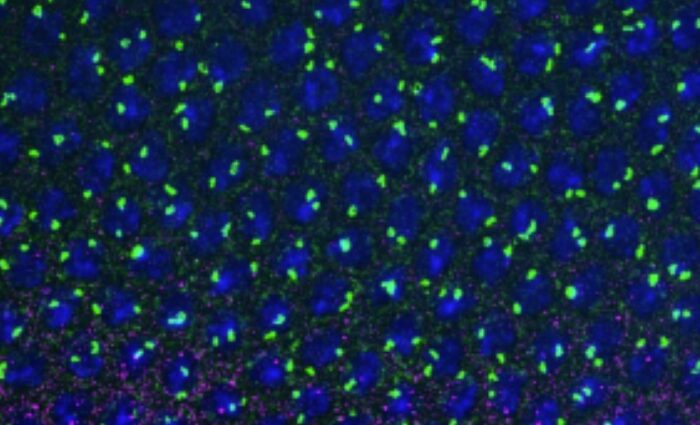Most degenerative diseases are caused by the toxicity of protein forming aggregates, for example during Parkinson’s or Alzheimer’s diseases. In this article, Oamen et al discovered that the lipid tripentadecanoin has a strong neuroprotective activity. The toxicity of protein aggregates is largely reduced when neurons are pre or post treated by tripentadecanoin. Using baker’s yeast as a model for cellular aging, the authors could identify one of the targets of tripentadecanoin, Neuroglobin. Indeed, the expression level of the neuroglobin protein (Yhb1 in yeast) is induced by tripentadecanoin. This induction is mediated by p-bodies which are regulators of mRNA stability that form during cellular stress or during yeast aging. Induction of neuroglobin expression, using genetic tools, was already known to confer a cellular protection against toxic protein aggregates. Here, tripentadecanoin can achieve this goal naturally. The authors then validated that tripentadecanoin is effective in animal models of retinal degeneration. In conclusion, other genes induced by tripentadecanoin have been observed in this study and these could teach us a lot more on the processes of cellular aging and neurodegenerative diseases.








